Will Mumbai and 29 lakh SEWA sisters get a chance to visit a seminal show? The Hum Sab Ek exhibit, compiled from oral histories and surveys of 1,000 homes, maps the practical, expedient, and mutually beneficial solutions devised by India’s largest trade union of self-employed women to overcome COVID
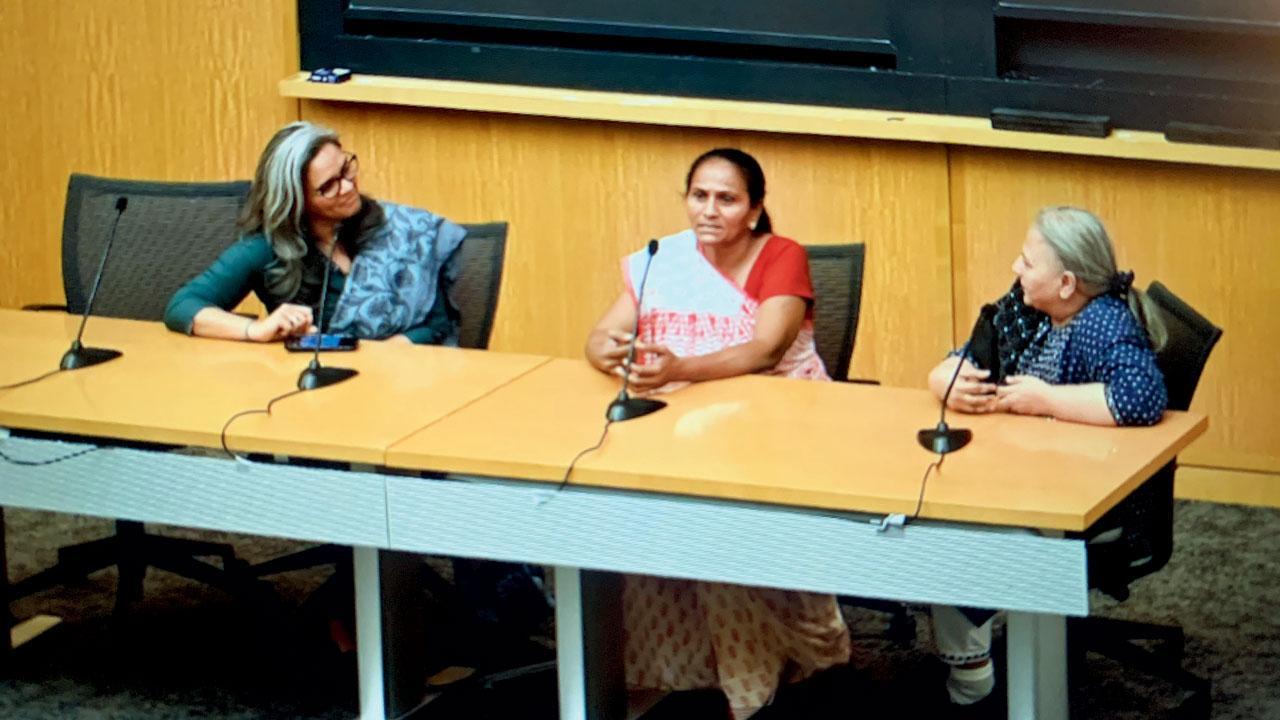
Former SEWA president Kapilaben Bhailalbhai Vankar delivered an uninterrupted 35-minute speech during the opening reception of Hum Sab Ek exhibition at the Tsai Auditorium, part of the Lakshmi Mittal and Family South Asia Institute on Harvard’s Center for Government and International Studies South (CGIS South) campus in Cambridge, on April 15. SEWA director Reemaben Nanavaty (right), translating for her, requested Kapilaben to slow down, as it was difficult to accurately convey every detail of her impassioned delivery. Sarita Gupta, vice president-US Programmes at Ford Foundation, was also present
Namaste, I am Kapilaben from Rasmol village, Anand District, Gujarat,” greeted a beaming face from my laptop screen. The vibrant cyan wall behind Kapilaben Bhailalbhai Vankar, 54, during the video interview was in stark contrast to the venue she occupied on April 15, with its acoustic wood panels and AV screen. On that day, at the opening reception of Hum Sab Ek multimedia exhibition, Kapilaben—formerly the president at the Self Employed Women’s Association (SEWA)—engaged in a panel discussion with Reema Nanavaty, SEWA’s director, and Sarita Gupta, vice president-US Programmes at Ford Foundation, her firebrand voice deeply resonating with the audience.
ADVERTISEMENT
Draped in a hand-block printed khadi saree, Kapilaben delivered a 35-minute speech to an audience of academicians, medical practitioners, and Harvard graduate students at the Tsai Auditorium in the Center for Government and International Studies South (CGIS South), part of the Lakshmi Mittal and Family South Asia Institute on Harvard campus in Cambridge. “I was so engrossed in sharing stories about my sisters, I lost track of time,” she laughs. “For me, SEWA is not an organisation; it is a sisterhood.”
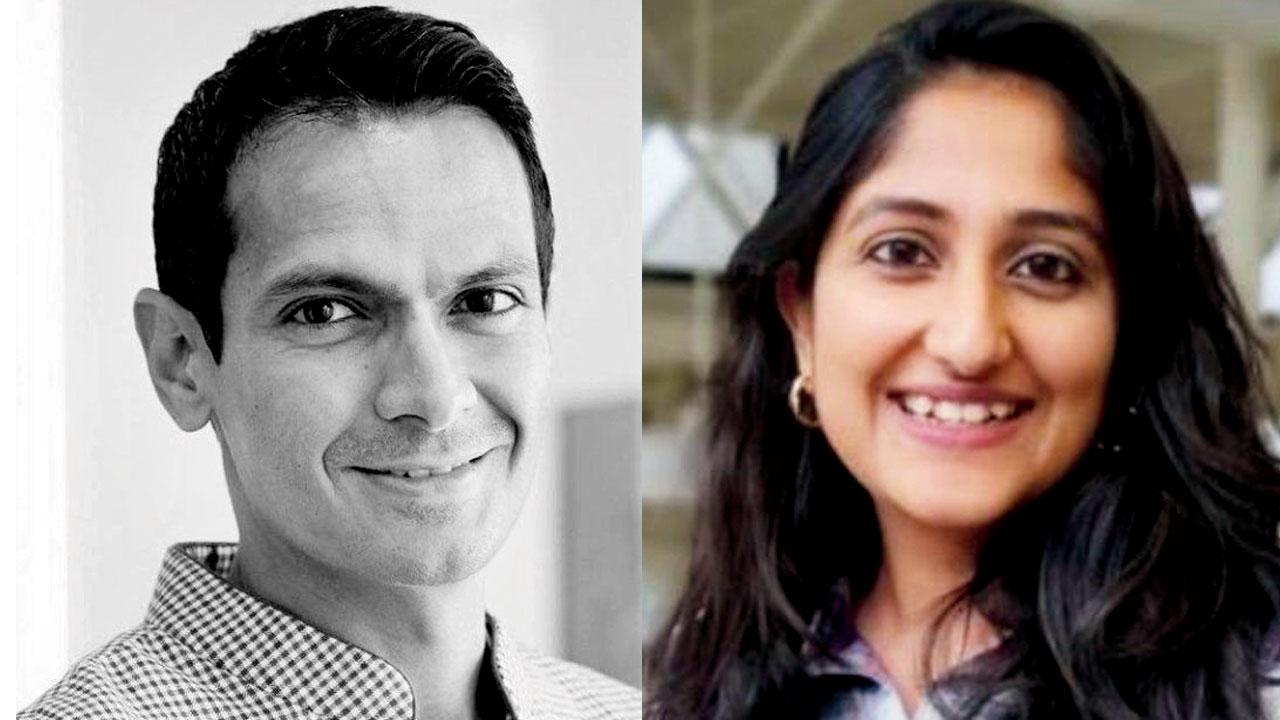 Dr Satchit Balsari and Hiteshree Das
Dr Satchit Balsari and Hiteshree Das
“As the woman who helmed SEWA during the COVID outbreak, Kapilaben was the natural choice to talk about the struggles of disadvantaged yet remarkably empowered women who negotiated the mahamari [epidemic] despite economic, political and social constraints,” Reemaben tells mid-day. As the pandemic unfolded, what initially seemed like a short disruption turned into prolonged uncertainty. By the third day, SEWA members were exploring virtual work solutions with Kapilaben shouldering the task of motivating them.
Kapilaben worked as a farmer for 23 years before joining SEWA. “I had no real identity,” she admits. “It was SEWA that transformed me into a boss, manager, and producer. Speaking in Boston on behalf of countless empowered bens [sisters] was incredible. It reminded me that without SEWA, we wouldn’t have [had the chance to] share our story on a global platform.”
“Her ability to address questions with tangible real-life examples was remarkable. She didn’t simply speak; she illustrated her points with concrete examples,” feels Reemaben, who served as Kapilaben’s translator. “Many assumed I was a professional translator and praised my skills. Some even inquired if I had been working as a translator with SEWA for the last 40 years, to which I replied with a smile, and a ‘sort of’. My role is to convey the message with the same passion and authenticity as my sister speakers.”
In 2022, Dr Satchit Balsari, an emergency physician and faculty at the Harvard Medical School, led a research team to examine the pandemic’s impact on the 2.9 million members of SEWA and their responses to it. This study involved collecting 30 hours of oral histories and conducting a survey of 1,000 households. “After data collection, we consulted SEWA members on how they wanted their stories told. Their response was clear: ‘spread it far and wide. Take our stories to the cities and help the latte and laptop crowds understand our struggles,’” Dr Satchit tells mid-day. The Mumbai resident studied at Grant Government Medical College before relocating to Harvard and specialising in research focused on complex humanitarian emergencies and disasters.
While the mandate was clear, Dr Satchit wasn’t certain of the next steps. Collaborating with colleagues, he drew on previous discussions about merging the sciences and humanities to create interdisciplinary narratives. The project leader and curator explains, “I also involved graduate students, many of whom are from India, and collectively, we conceived the idea of a travelling multi-media exhibition,” sharing the genesis of Hum Sab Ek.
Among the participating students was Hiteshree Das, currently pursuing a Master’s degree in design studies in the public domain at Harvard. As a member of the seven-person core team, she acted as both co-curator and designer. “The research material has evolved from a mere archive to an immersive multimedia exhibition and has eventually sparked academic discourse about research ethics, particularly regarding the involvement of research participants [SEWA],” she shares.
Reemaben appreciates the exhibition’s inclusive approach, subtly integrating SEWA’s multifaceted efforts. “It not only sheds light on the impact of COVID but also showcases SEWA’s diverse sectors and technological adaptations. By reflecting on the last 50 years and envisioning the next 50, including climate action through [the exhibition segment titled] Salt, Wind and Fire, it provided a holistic view.” Sahil Hebbar, wellness programme coordinator at SEWA, agrees. “Kapilaben’s message stressed on the enduring nature of struggle, extending beyond singular events like COVID. [She highlighted how] it is an ongoing battle faced by saltpan farmers, further compounded by the worsening effects of climate change.”
The exhibition, featuring photographs, oral testimonies, interactive digital displays, and artifacts used by women during the pandemic, debuted in Boston earlier this month and may visit India this year. It not only spotlights SEWA’s remarkable organisational skills, bridging gaps left by the state and society, but also serves as an educational dialogue on the pandemic’s effects on India’s working poor. It demonstrates how SEWA members effectively navigated the biggest public health emergency of our time, a testament to 50 years of community investment rooted in mutual cooperation and SEWA’s beloved founder, Elaben Bhatt’s concept of “economy of nurturance” or
“anubandh”.
Woven Together
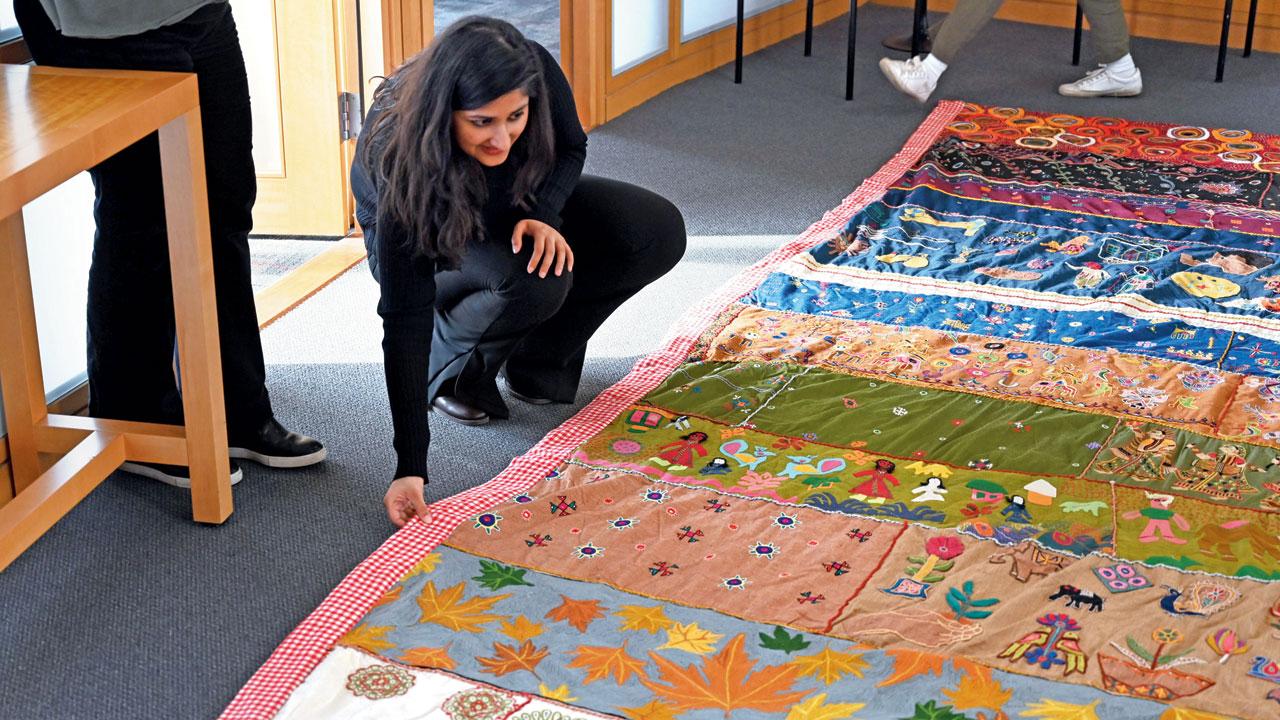 Kapilaben’s hometown weavers in Anand district added three bold lines into the tapestry, symbolising SEWA’s brief pandemic pause, lasting only three days
Kapilaben’s hometown weavers in Anand district added three bold lines into the tapestry, symbolising SEWA’s brief pandemic pause, lasting only three days
For centuries, Gujarat has thrived as innovative centre of weaving, dyeing and embroidery, with its textiles traded globally long before the jacquard loom arrived. However, the arrival of the East India Company disrupted the circular economies that supported nomadic and rural communities. By the 19th century, British dominance saw the rise of power looms in Ahmedabad, although the traditional spinning wheel or charkha, gained prominence during India’s struggle for independence, championed by Mahatma Gandhi.
In recent years, mechanisation, digitisation, and globalisation have flooded the domestic market with affordable imitations, challenging the distinction of handmade textiles. Despite this, discerning consumers and global designer brands continue to support local artisans, many of whom work from home. Yet, the disruption of the global supply chain in 2020 severely impacted demand for these crafts, jeopardising the livelihoods of home-based artisans across India.
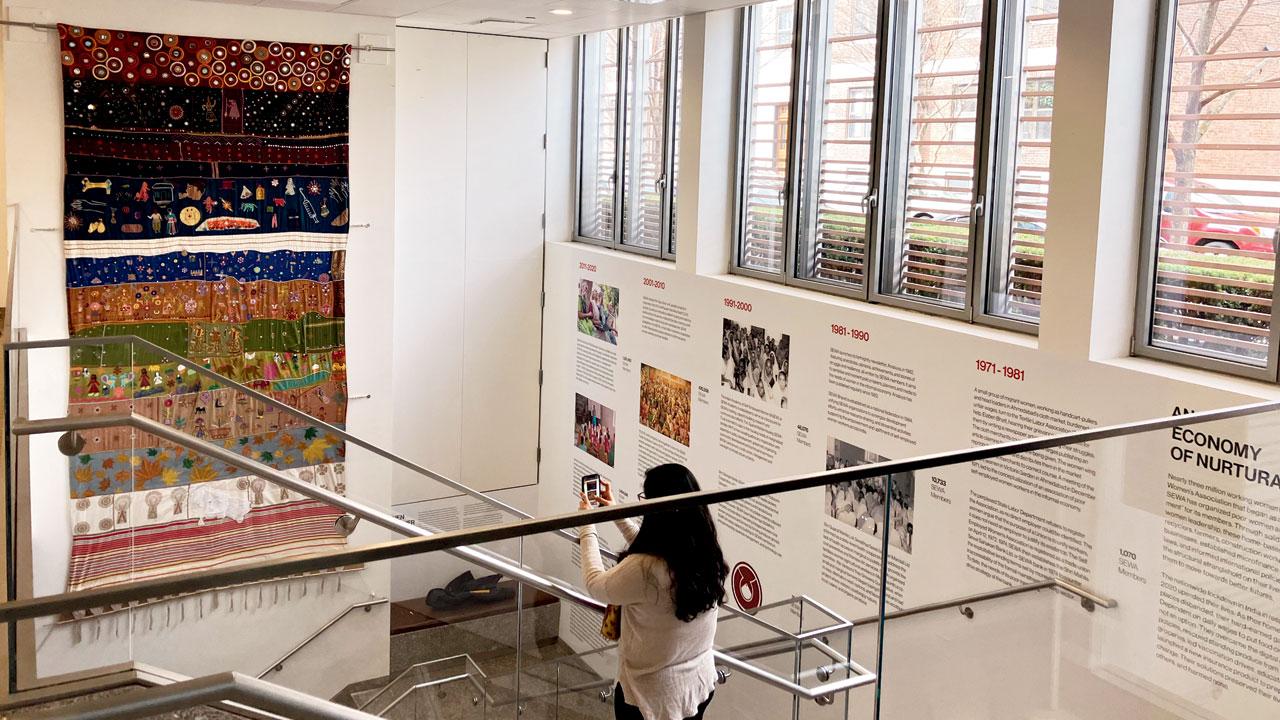
This 18 feet x 16 feet textile panel, completed in just 45 days by SEWA members across 50 centres, embodies the journey of women artisans. Each warp symbolises their passage from childhood to womanhood, highlighting their resilience and collaboration through SEWA’s trade unions and cooperatives. Despite the pandemic briefly dimming the vibrancy of their craft, these artisans swiftly shifted to mask-making, with SEWA supplying masks to 70 per cent of surveyed households in 2020-21.
Amra Khan, a visiting artist fellow from Pakistan, assisted in mounting and tightening the tapestry at Tsai Auditorium. “As the installation, Woven Together, made by SEWA’s weavers and home-based artisans from across the country, shows: Our journeys are richer together, stronger together. A good lesson for all of us on this campus,” says Dr Satchit Balsari.
Celebration of the National Policy for Street Vendors
 Ela Bhatt (right) founded SEWA in 1972 to empower marginalised women in the informal sector, promoting economic independence through collective strength
Ela Bhatt (right) founded SEWA in 1972 to empower marginalised women in the informal sector, promoting economic independence through collective strength
India is home to 5-6 million urban street vendors, supplying affordable fresh produce in ‘natural markets’ born from local demand near temples or residential areas. Despite their significance, they constantly face eviction threats, prompting SEWA to advocate for their recognition and protection.
In November 1995, street vendor representatives from five continents convened in Bellagio, Italy, urging governments to enact supportive policies. SEWA collaborated with National Association of Street Vendors in India (NASVI) and the government to shape India’s National Policy on Urban Street Vendors, officially announced in 2004.
This lively photo captures SEWA founder Elaben Bhatt (1933-2022) celebrating the fruition of the policy alongside her ‘sisters’—Manjulaben Patelai (to her left) and Manaliben Shah, now National Secretary, SEWA (in background to the right). Elaben emphasised in her writings that “organising, the cornerstone of SEWA, is the process by which women come together in solidarity, transcending barriers of caste, religion, and geography. Today, SEWA’s principles of solidarity resonate amid global divisions, including in the United States.
You Are On Mute
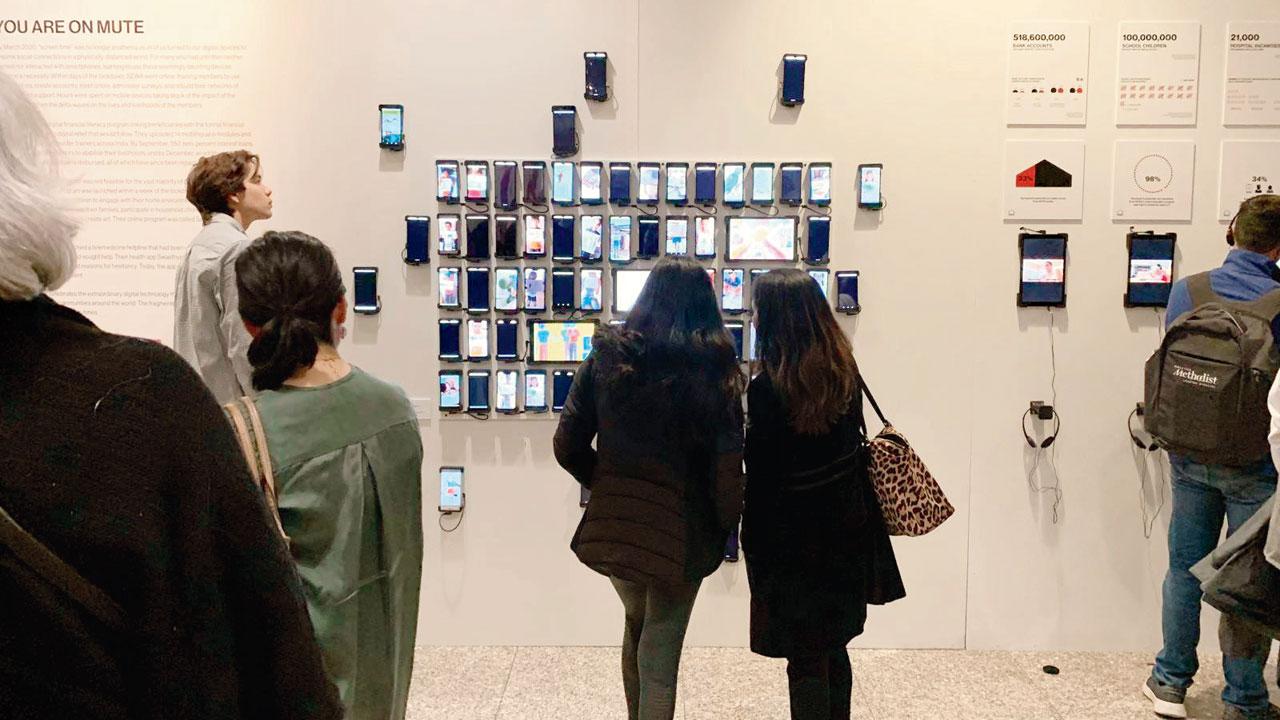 The lockdown isolated SEWA sisters, disrupting the physical camaraderie found at SEWA’s offices and trade centres. They coped by sharing educational materials, facilitated online banking, designed asynchronous school curricula and launched a telemedicine programme
The lockdown isolated SEWA sisters, disrupting the physical camaraderie found at SEWA’s offices and trade centres. They coped by sharing educational materials, facilitated online banking, designed asynchronous school curricula and launched a telemedicine programme
By March 2020, “screen time” became essential as digital devices facilitated social connections amid physical distancing. SEWA swiftly transitioned online, providing smartphone training, account creation, and virtual meetings for members. They conducted surveys to assess the lockdown’s impact, followed by the delta waves, on members’ lives and livelihoods.
SEWA’s digital financial literacy programme connected beneficiaries to formal financial systems, offering relief through 14 multilingual e-modules and virtually training 4,188 master trainers across India. By September, they disbursed 350 interest-free loans to street vendors for livelihood stability, followed by 1,354 loans with 2.5 per cent interest by December, all repaid since. Recognising the impracticality of Zoom schooling for most Indian children, SEWA announced an asynchronous digital programme, “Samany no Samman – Respecting Time,” within a week of the lockdown. This programme encouraged engagement with home environments, local histories, household chores, creative activities using upcycled waste.
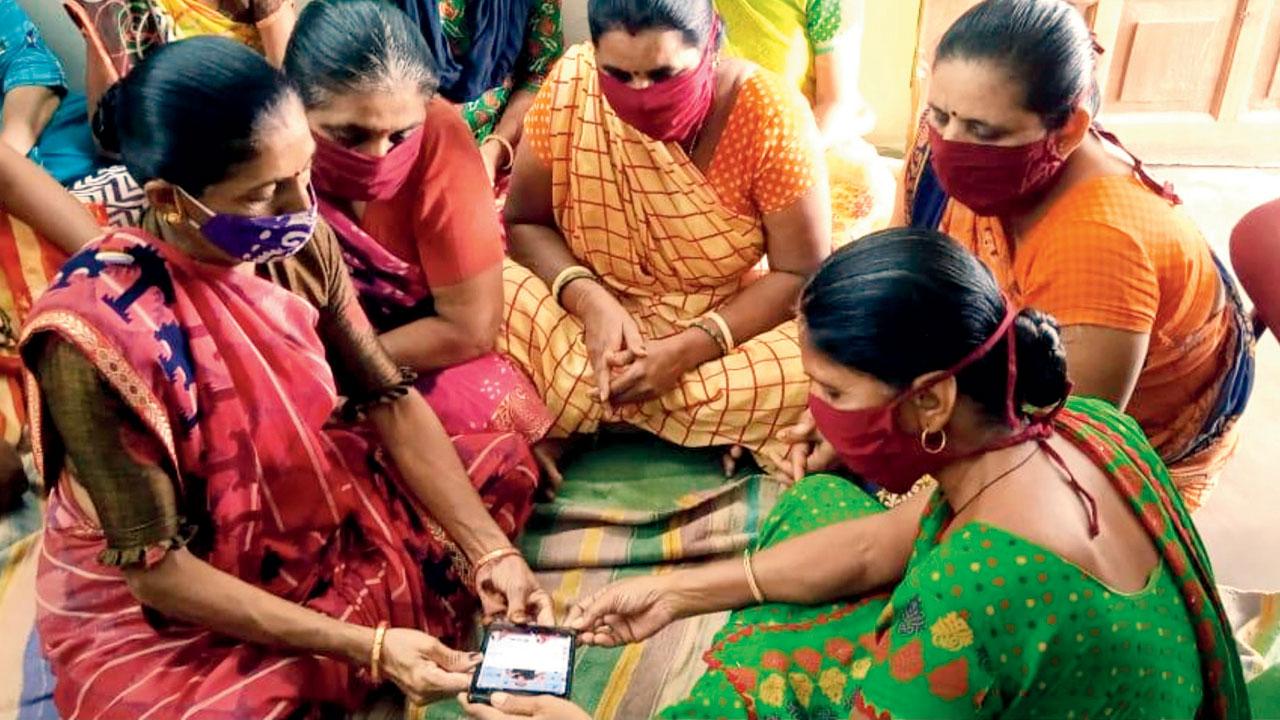
By March-end, SEWA introduced a telemedicine helpline utilised by one-third of surveyed households seeking assistance. Their health app Swasthya Samudaya, maintained vaccination logs, tracked hesitancy reasons, and currently offers nudges, reminders, and health education content.
This installation, comprising 80 phones and archival footage of the Zoom calls between SEWA members, garnered significant attention. It celebrates digital technology’s pivotal role in connecting societies during the global upheaval of the pandemic. The fragmented display symbolises the fractured reality of those uncertain times.
Salt, Wind & Fire
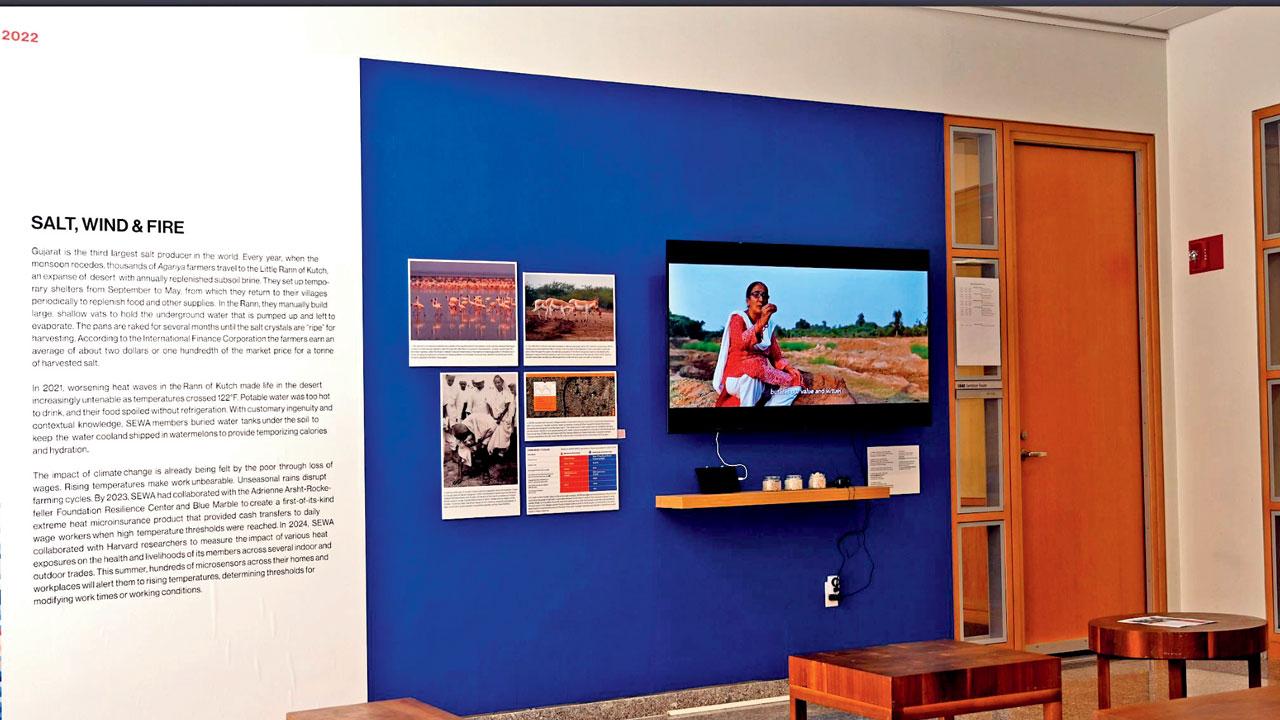 The exhibit’s video shows the manual, seasonal process of harvesting salt from subsoil brine, with flamingos marking the switch shift from diesel engines to quieter, cleaner solar-powered engines, displayed nearby. India’s move to clean energy requires investments in green technologies. SEWA’s salt pan workers’ transformation illustrates sustainable methods, inspiring positive change
The exhibit’s video shows the manual, seasonal process of harvesting salt from subsoil brine, with flamingos marking the switch shift from diesel engines to quieter, cleaner solar-powered engines, displayed nearby. India’s move to clean energy requires investments in green technologies. SEWA’s salt pan workers’ transformation illustrates sustainable methods, inspiring positive change
Gujarat, the world’s third largest salt producer, sees Agariya salt farmers migrating to the Little Rann of Kutch post-monsoon season. From September to May, they erect temporary shelters and manually create large salt pans, harvesting salt crystals after months of evaporation. Despite their efforts, farmers typically earn only about two dollars or one-hundredth of the market price for a tonne of harvested salt, as reported by the International Finance Corporation.
In 2021, worsening heat waves in the Rann of Kutch made life increasingly untenable, prompting SEWA members to innovate with buried water tanks and imported watermelons to combat the desert’s harsh conditions. Climate change exacerbates challenges for the poor, impacting wages and disrupting farm cycles.
By 2023, SEWA partnered with Adrienne Arsht-Rockefeller Foundation Resilience Center and Blue Marble on a microinsurance product aiding daily wage workers during extreme heat events. In 2024, collaborations with Harvard researchers targeted measuring and mitigating heat-related health and livelihood risks for members. This summer, hundreds of microsensors in their homes and workplaces will monitor rising temperatures, guiding adjustments to work times or conditions based on set thresholds.
“This installation was my favourite at the pradarshan,” Kapilaben tells mid-day. “Gandhi Bapu’s teachings formed the bedrock of SEWA’s ethos. The salt that Bapu first picked up is the same salt produced by my sisters. The accompanying film, with interviews with my sisters discussing how SEWA provided employment opportunities, particularly touched my heart.”
Now showing
The Hum Sab Ek exhibition kicks off at the Harvard campus, before heading to the World Bank’s headquarters in Washington DC. A potential showcase could unfold at the Clinton Global Initiative in New York. “India is our karmabhoomi, and plans are in motion to bring the exhibition to India by the end of 2024, aiming for 29 lakh SEWA sisters to witness it. Potential locations include Mumbai, New Delhi and Ahmedabad, as well as SEWA centres across 18 states through Bolti Bheet (Talking Walls] with content tailored in 12 languages,” says Reema Nanavaty, SEWA’s director.
 Subscribe today by clicking the link and stay updated with the latest news!" Click here!
Subscribe today by clicking the link and stay updated with the latest news!" Click here!












